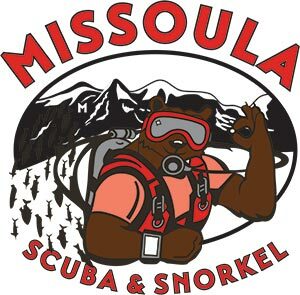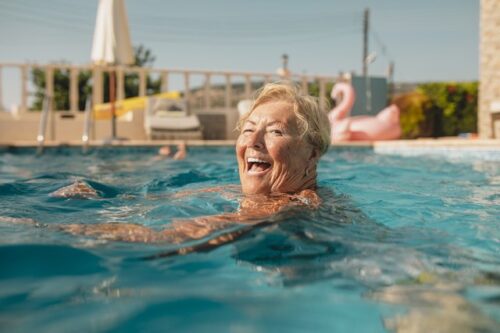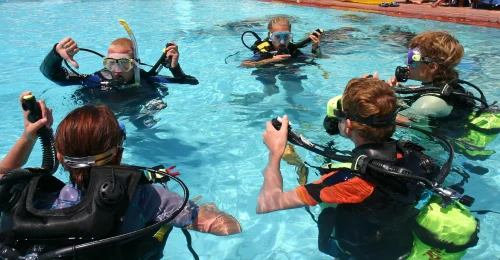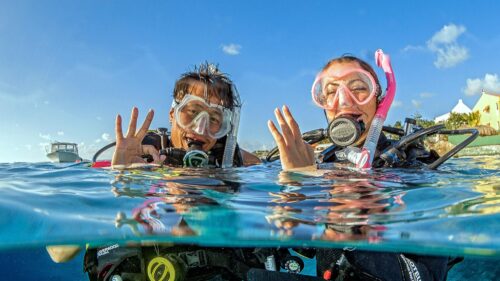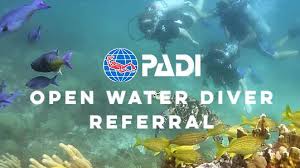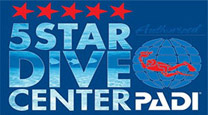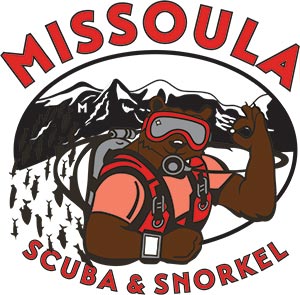One of the most common questions we get is: “I want to Scuba Dive, how do I get started?”
The best thing to do when getting started Scuba Diving is to talk to our trained trained staff so we can explain the process in depth. None the less, there are 5 basic areas that have to be completed to become a PADI Open Water Diver.
1) Paperwork
Like with most things, PADI wants every instructor to have their i’s dotted and their t’s crossed. The paperwork will take about 10 minutes and is simple to complete. One section of the paperwork asks you questions about your physical health. Don’t be alarmed if you think you may not qualify. Many people with “disqualifying qualities” can still dive! If you answer YES to any of the questions on your physical form, all you need is physician permission in writing stating that your particular issue(s) won’t impede your ability to Scuba. Don’t think this will be a timely hassle. If they agree, they usually write a quick note giving their authorization in minutes (if applicable). Attached is a Medical Statement for them to use.

2) Learning
You have to learn the basics of Scuba Diving in one of 2 ways – in class or through eLearning. In a classroom environment there is a 2-day long course at our shop that takes you from A to Z teaching PADI’s (Professional Association of Dive Instructors) proven methods of Scuba instruction. At the end of this 2-day course, you have to take an exam to assure understanding of all of the information you received. On the other hand, eLearning is done via the internet in the comfort of your own home. You can stop and start whenever you wish and go at your own pace. If you choose eLearning, you will have to take an eLearning review quiz to assure you understood the contents. The majority of people choose eLearning for its flexibility versus the classroom environment.
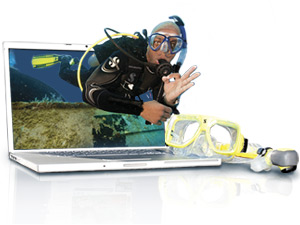
3) Swimming and Swim Float (treading water)
You must either complete a 200-yard continuous surface swim at your pace with any style(s) or a 300-yard swim with mask, snorkel and fins. If you aren’t the best swimmer, relax. We are here to help you refine your strokes or help you snorkel more proficiently! When floating/treading water, you must demonstrate that they can comfortably maintain yourself in water too deep in which to stand by completing a 10-minute swim/float without using any swim aids. This is a lot easier than it sounds and we can instruct you in methods to help you with this.
4) Confined Water Dives
Confined water dives is a general term that refers to training in either a swimming pool or in a reasonable open water environment. “Confined ‘open-water’” is an open water site that offers swimming pool-like conditions with respect to clarity, calmness, and depth. During your confined water dives, you will learn all (and more) of the necessary skills to safely and effectively Scuba Dive.
5) Open Water Dives
This is where you are tested in your ability to demonstrate skills in open water that you learned during your confined water dives. You can do this locally during warm months, at “the Crater” (a 95F geothermal location in Utah we visit 2 times per winter), during your own vacations (see #6 below) or on one of our dive trips!
6) Diver Referral
Many people choose to become a diver because they will be taking a vacation to a warm climate and want to experience the underwater world’s plentiful life, beautiful corals and so much more. In this case, some opt to do their eLearning portion and confined water dives with FFS&S/MS&S here in Montana and then finish their open water dives while on their vacations. This is easily accomplished with FFS&S/MS&S when we record all of your eLearning scores and accomplishments during the confined water dives and send the information to a qualified PADI facility where you’re traveling to!
